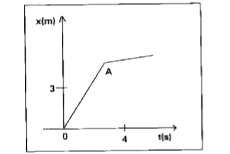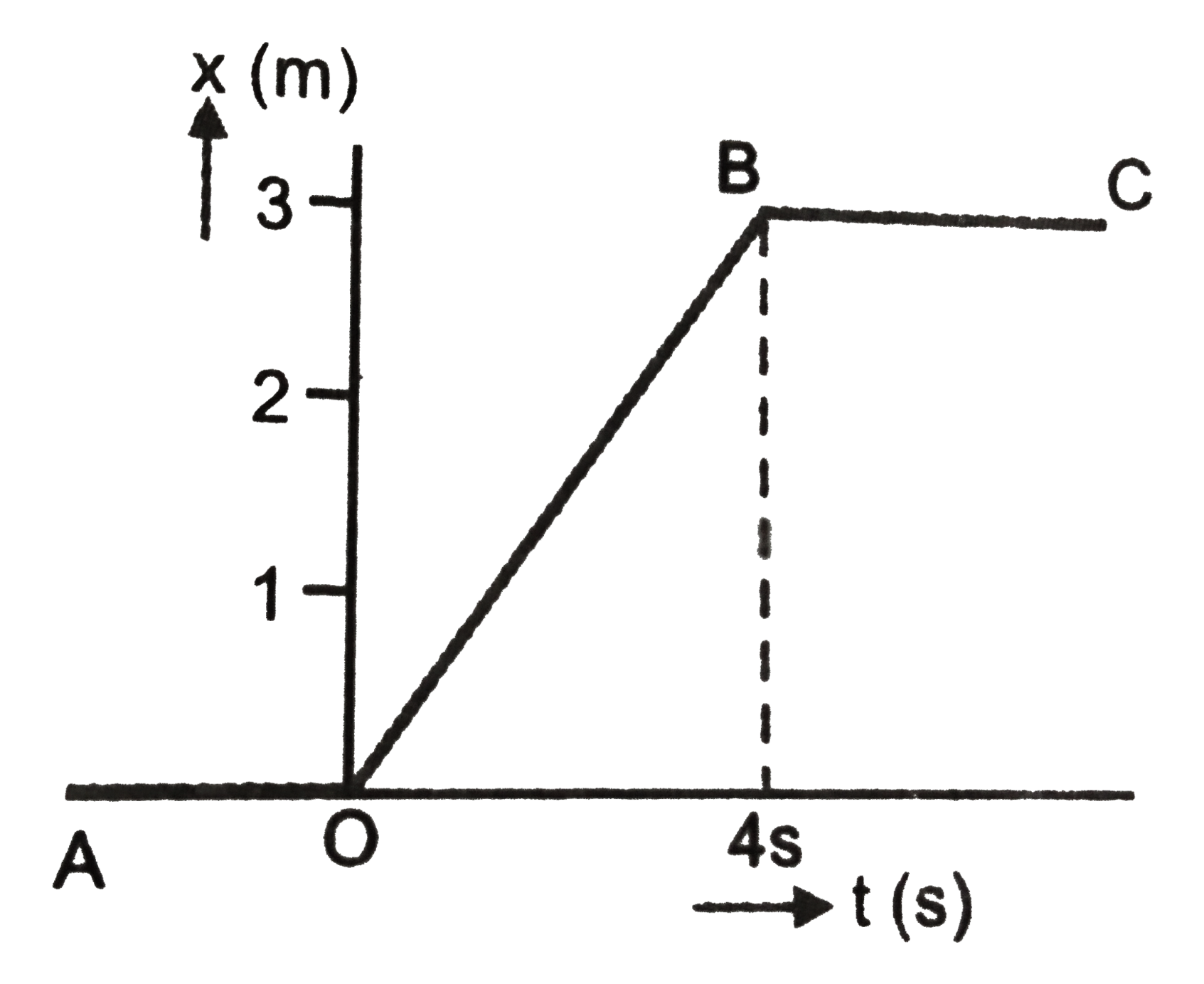Figure shows the position - time graph of a particle of mass 4 kg . What is the (a) force on the particle for t<0,t<4s,0<t<4s ? (b) impulse at t= 0 and t = 4 s ?
(Consider one - dimensional motion only )
 .
.
(i) For t<0 , the position time graph is AO which means displacement of the particle is zero .
i.e ., particle is at rest at the origin .hence force on the particle must be zero .
For 0<t< us , s the position time graph Ob has a constant slope . There fore , the particle remains at a distance 3m from the origin , i.e . it is at rest .. Hence froce on the particle is zero .
(iv) Impulse at t = 0
We know ,Impulse = change in linear momentum , Before t = 0 particle is at rest i.e u = 0 . After t = 0 , particle has a constant velocity v=34
=0.75 m/s

∴ impulse = m(v−u)
=u(0.75−0)
= 3 kg m/s
Before t = 4s , ,particle has a constant velocity
u = 0.75 m/s
After t = 4s , particle is at rest i.e v= 0
Impulse = m(v−u)=4(0−0.75)=3kgm/s .
Similar Questions
Fig. shows the position-time graph of a particle of mass 4 kg. What is the (i) force acting on the particle for t<0,t<4s,0<t<4s? (ii) impulse at t = 0 and t = 4 s? Assume that the motion is one dimensional.
View SolutionShown the position time graph of a particle of mass 4 kg What is the force on the particle for t<0,0<t<4s motion only
 .
.
View Solution
Knowledge Check
Figure shows the position time graph of a particle of mass 5kg. The force acting on the particle for 0<t<4s and 8s<t<12s respectively are,
 A5N,5NB5N.7.5NC5N,10ND0N,0N
A5N,5NB5N.7.5NC5N,10ND0N,0NFigure shows the position-time graph of a particle of mass 4kg. Let the force on the particle for t<0 , 0<tlt,4s , t>4s be F1,F2 and F3 respectively. Then
 AF1=F2=F3=0BF1>F2=F3CF1>F2>F3DF1<F2<F3
AF1=F2=F3=0BF1>F2=F3CF1>F2>F3DF1<F2<F3Figure shows the position-time graph of a particle of mass 4kg. Let the force on the particle for t<0 , 0<tlt,4s , t>4s be F1,F2 and F3 respectively. Then
 AF1=F2=F3=0BF1>F2=F3CF1>F2>F3DF1<F2<F3
AF1=F2=F3=0BF1>F2=F3CF1>F2>F3DF1<F2<F3
Fig. shows the position-time graph of a particle of mass 4 kg. What is the (i) force acting on the particle for t<0,t<4s,0<t<4s? (ii) impulse at t = 0 and t = 4 s? Assume that the motion is one dimensional.

View SolutionFig. shows the position-time graph of a particle of mass 4 kg. What is the (i) force acting on the particle for t<0,t<4s,0<t<4s? (ii) impulse at t = 0 and t = 4 s? Assume that the motion is one dimensional.
View SolutionPosition time graph of a particle of mass 2 kg is shown in figrure. Total work done on the particle from t=0 to t=4s is

View SolutionThe position-time graph of a particle of mass 0.1 kg is shown. The impulse at t = 2s is :

View SolutionPosition time graph of a particle of mass 2 kg is shown in figrure. Total work done on the particle from t=0 to t=4s is

View Solution
